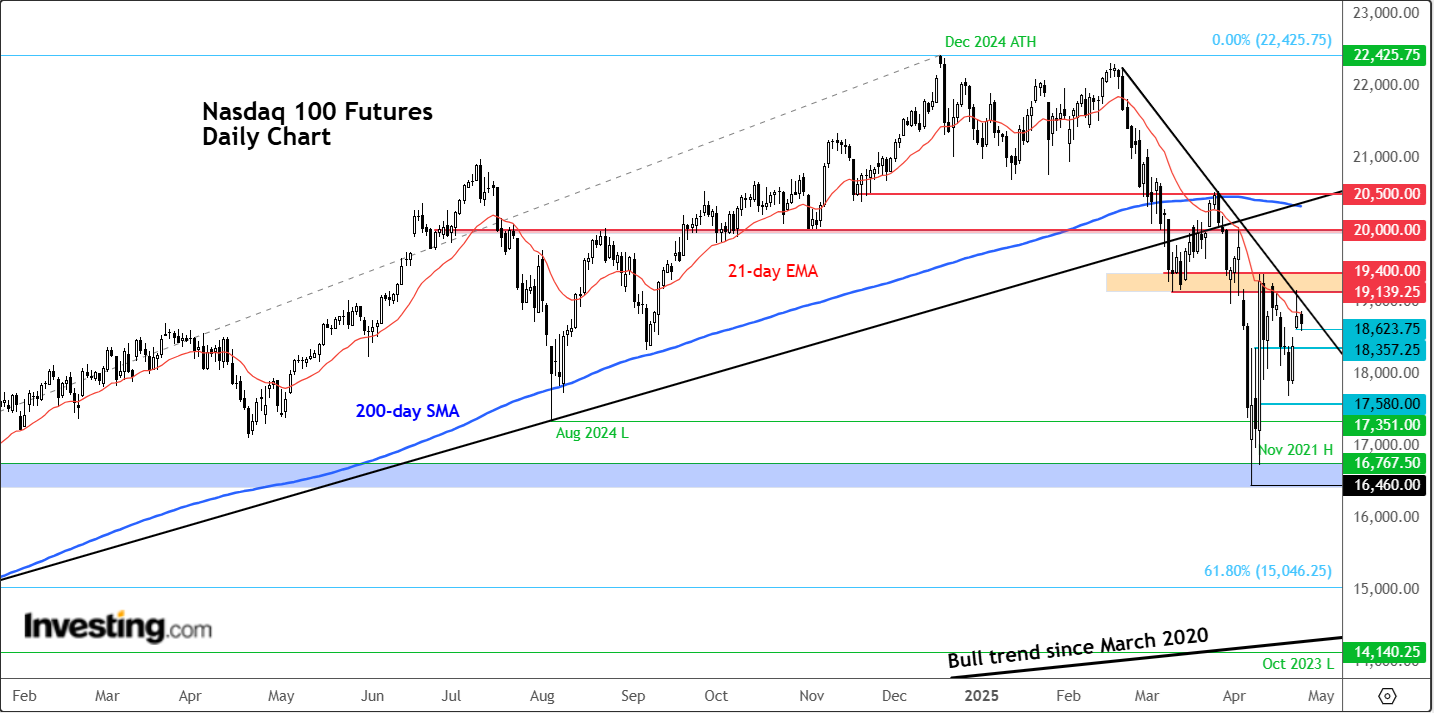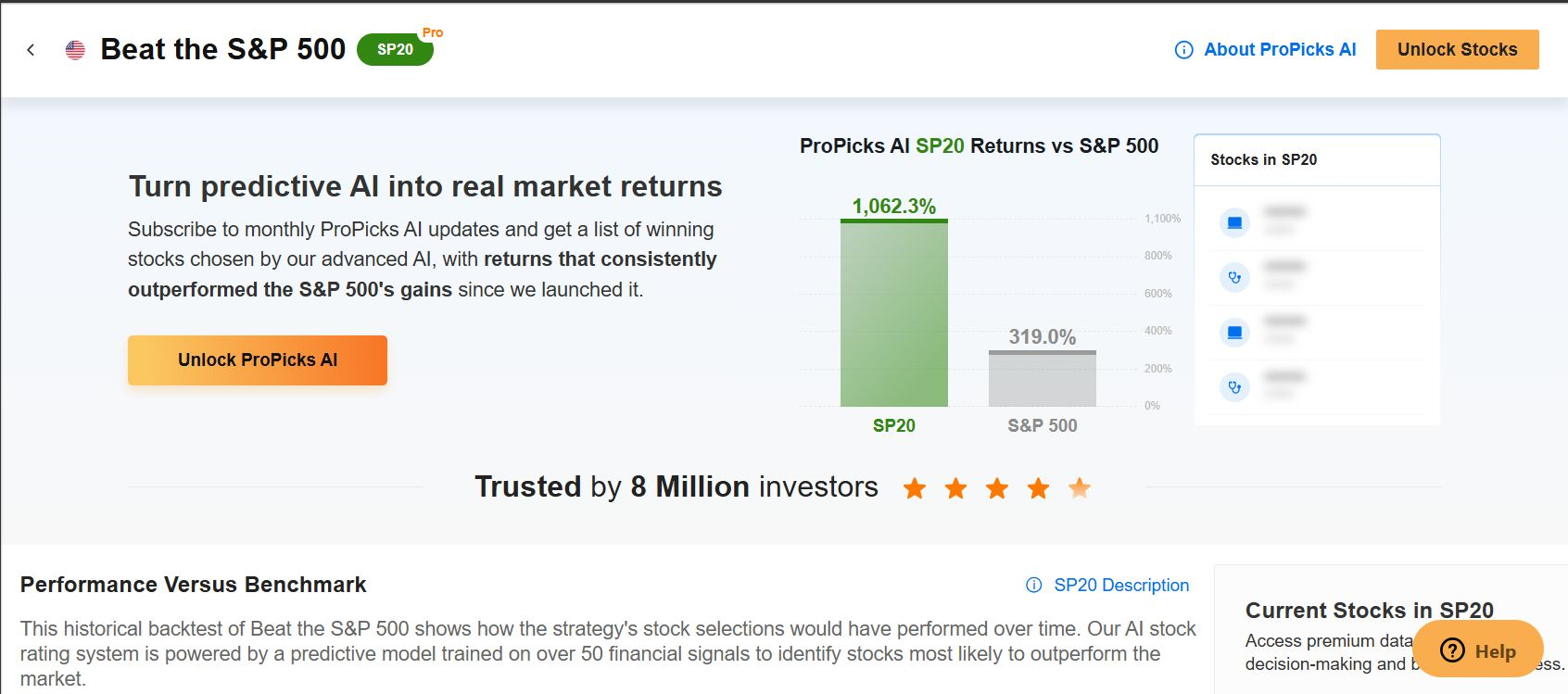Praxis Precision Medicines general counsel sells $4.8m in shares
- Beijing brushes off rumours of renewed negotiations.
- Risk-off tone returns, lifting safe haven assets
- US index futures are down.
- Looking for actionable trade ideas to navigate the current market volatility? Subscribe here to unlock access to InvestingPro’s AI-selected stock winners.
Just a day after the “Sell America” unwind sparked a relief bounce, markets have resumed their slide. US index futures, along with other key indices, gave back gains as reality bit once more — namely, that the path to resolving the US-China trade spat remains murky at best. Optimism, it appears, was short-lived.
Comments from both sides have cast a pall over sentiment, triggering a fresh wave of caution among investors. The tug-of-war in headlines is likely to persist, which means plenty of volatility — a playground for traders, but a headache for the longer-term crowd. In these conditions, level-to-level trading remains the most pragmatic approach.
Nasdaq 100 Technical Analysis and Trade Ideas
The recent bounce in the Nasdaq 100 may have lifted some spirits, but the bigger technical picture remains murky. The index is still grappling with its descending trend line — a barrier that has held firm for now. Until we see a break and sustained move above this trend line, the bias remains neutral to bearish. Higher highs are needed before any real bullish conviction can take root.
At the time of writing, the Nasdaq 100 future had rebounded slightly from intraday lows, but again struggled at resistance.
Key resistance looms between 19,140 and 19,400 — where the descending trend line converges with a former support zone. A push through here might invite a run towards the y20,000 level.
On the downside, yesterday’s low of 18,623 is the first support to monitor. A break here could see prices gravitate toward the 18,350 region, which marks an old resistance gap. Further down, 18,000 and then 17,580 round out the key zones to keep an eye on.
Bessent Dampens Hopes as China Stands Firm
It was US Treasury Secretary Scott Bessent who lobbed the latest cold bucket over markets, firmly stating there’s little reason to expect imminent progress. China, for its part, confirmed that no formal discussions are taking place. This came just days after President Trump had reignited hopes, sparking a brief global rally.
But with Bessent’s remarks, the “Sell America” trade has returned. US index futures slipped, USD/JPY dropped 0.7%, and gold resumed its upward climb as safe-haven bids returned. Meanwhile, EUR/USD flirted with the 1.14 handle.
Trump also hinted at the potential for fresh tariffs on Chinese goods in the coming weeks — but Bessent’s tone suggested no deal is in sight. He spoke of structural imbalances that may take “years, not months” to resolve, raising questions about whether either side is ready to make real concessions.
China’s Ministry of Commerce wasted no time in pushing back. Beijing said it wants Washington to scrap all unilateral tariffs before resuming serious talks. Words, they suggested, are not enough — what’s needed is sincerity, consistency, and a designated US negotiator. Until then, don’t expect much more than posturing from either camp.
Alphabet Results to Come as Corporate Earnings Eclipsed by Trade Drama
With trade tensions dominating, earnings have slipped into the background — though there’s been no shortage of results. IBM (NYSE:IBM) disappointed, sending shares lower in pre-market trading. Over in Europe, Unilever (LON:ULVR) bucked the trend with better-than-expected sales, while Nestlé softened. BNP Paribas failed to impress, dragging lower as it missed profit estimates.
Back to Wall Street, we will have results from the likes of PepsiCo (NASDAQ:PEP), Procter & Gamble (NYSE:PG) and American Airlines (NASDAQ:AAL) to come before the bell, before attention shifts to Alphabet (NASDAQ:GOOGL), the parent company of Google, which is set to unveil its fiscal first-quarter results later this evening. Overall, the mood remains cautious, with macro concerns overshadowing micro beats and misses.
After the close, all eyes on Wall Street will be firmly trained on what Alphabet has to say—not just about the quarter gone by, but what lies ahead.
While analysts aren’t anticipating any immediate bruises from tariffs to show up in Q1 figures—either in terms of revenue or earnings per share—the real intrigue lies in the forward guidance. Markets will be combing through the outlook for signs of how much damage Alphabet might sustain in the second half of the year, especially with geopolitical clouds still looming.
Another looming question mark? The advertising landscape. Agencies are reportedly reassessing their search spend strategies, as users increasingly bypass traditional engines in favour of generative AI tools and social media platforms for information gathering.
For the quarter just ended, the Street is expecting Alphabet to post earnings of $2.01 per share on revenue totalling $89.1 billion, according to Bloomberg’s consensus.
***
Be sure to check out InvestingPro to stay in sync with the market trend and what it means for your trading. Whether you’re a novice investor or a seasoned trader, leveraging InvestingPro can unlock a world of investment opportunities while minimizing risks amid the challenging market backdrop.
Subscribe now and instantly unlock access to several market-beating features, including:
- ProPicks AI: AI-selected stock winners with proven track record.
- InvestingPro Fair Value: Instantly find out if a stock is underpriced or overvalued.
- Advanced Stock Screener: Search for the best stocks based on hundreds of selected filters, and criteria.
- Top Ideas: See what stocks billionaire investors such as Warren Buffett, Michael Burry, and George Soros are buying.

Disclaimer: This article is written for informational purposes only; it does not constitute a solicitation, offer, advice, counsel or recommendation to invest as such it is not intended to incentivize the purchase of assets in any way. I would like to
remind you that any type of asset, is evaluated from multiple perspectives and is highly risky and therefore, any investment decision and the associated risk remains with the investor.
